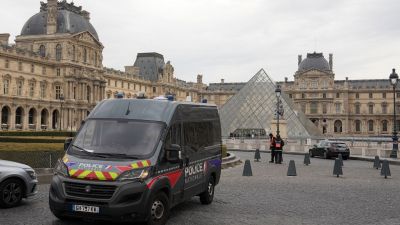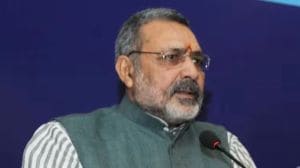20 people being questioned over suicide attack on Bhutto
Pakistani investigators probing the suicide attack on former premier Benazir Bhutto's motorcade last week are questioning about 20 people and have made headway in reconstructing the head of the second suicide bomber involved in the strike.

Pakistani investigators probing the suicide attack on former premier Benazir Bhutto’s motorcade last week are questioning about 20 people and have made headway in reconstructing the head of the second suicide bomber involved in the strike.
Officials involved in the probe here said some 20 people, including a few who were wounded in the devastating blasts that killed nearly 140 people, were being held for questioning. These people were currently not being treated as suspects, they said.
The identities of those who are being questioned were not disclosed.
Sleuths have also made progress in reconstructing the severed head of the suspected second suicide bomber, which was found in a badly mutilated condition several hours after the blasts that occurred at around midnight Thursday.
Officials had initially said only one suicide bomber was involved in the attack, but have now come to the conclusion that two men were behind the most devastating terrorist strike witnessed by Pakistan. The head of the first suicide bomber was found largely intact soon after the blasts.
The head of the second bomber was reconstructed by doctors at the Jinnah Postgraduate Medical Centre here with the help of military experts.
Sources said the reconstruction process was aided by the fact that sleuths had found pieces of the scalp with hair, parts of the eyes and nose and the beard of the suicide bomber while scouring the site of the attack.
Investigators had earlier said they believed the attackers were both Pakistanis and had detonated bombs packed with pellets and metal pieces that caused widespread devastation.
The first blast was smaller in intensity while the second one, triggered with about 15 kg of explosives, caused most of the deaths.
More details have also emerged about the attacks. The second suicide bomber has been identified by persons near Bhutto’s armoured truck as a man who attempted to get close to it several times but was turned away by the PPP volunteers guarding it.
Finally, he tried to get under the truck but was stopped by the volunteers. At this point, he blew himself up.
Meanwhile, authorities have taken steps to limit the role of DIG (Investigation) Mazoor Mughal in the probe after the PPP expressed reservations about his involvement in the investigation, Dawn News channel reported.
Bhutto had sought his removal from the probe, saying he was the police official in-charge when her husband Asif Ali Zardari was alleged tortured by police in Karachi some years ago.
Sources said Mughal had decided to go on leave to ensure there was “no hint of partiality” about the probe.
The PPP has also been demanding the involvement of foreign experts to investigate the blasts, but this has been rejected by the government.
Meanwhile, a report on the probe into the blasts submitted by the Federal Investigation Agency to President Pervez Musharraf said the blasts were carried out by two suicide bombers and no bombs had been planted in cars.
The report, prepared by the FIA’s Special Investigation Group, said: “High-powered explosive material was used with Russian devices while no grenade was used in the explosion.
“The quantity (of explosives used in) the second blast was approximately 12 to 14 kg as calculated by measuring the blast effect and intensity of detonation wave while the first was under seven kg,” The News quoted the report as saying.
“Ball bearings were embedded in the explosive belt for more lethal effect on men and material,” it said. The pellets caused holes in Bhutto’s armoured truck even though the vehicle was about 10 feet from the epicentre of the blast.
It said no bombs were planted in cars as investigators had found the floors of all vehicles in the vicinity of the blasts were intact and they were damaged only from outside.
The scalps of both the attackers had been pierced by pellets from the inside, proving that they were suicide bombers and not victims. The triggering mechanism used to detonate the explosive belts were mechanical and non- electrical and could be affected by jammers, the report said.
Bhutto’s truck movement was “well observed and detailed reconnaissance was carried out by some resourceful group”.
The trigger mechanism used in Friday’s attack had a “factory code and lot and batch” similar to those used in suicide attacks on the Kohat army mosque, Dera Ismail Khan, police training school in Peshawar and the mess of an army commando unit at Charsadda near Islamabad.
It also said “evidence found at the site revealed that the second suicide bomber was intercepted by the security guards before blowing up”.



- 01
- 02
- 03
- 04
- 05




























